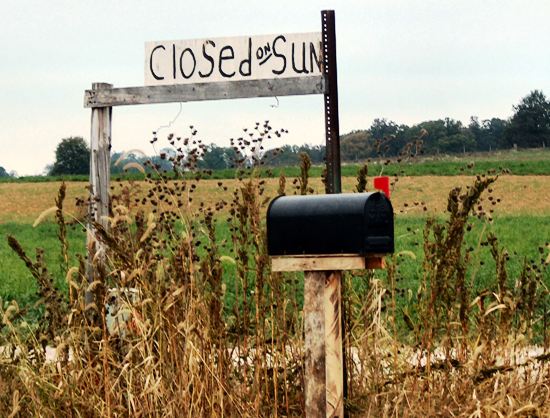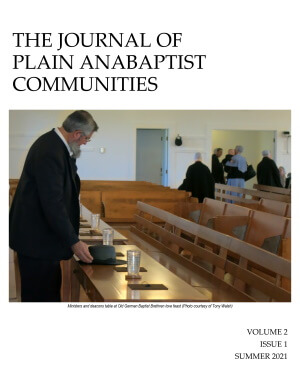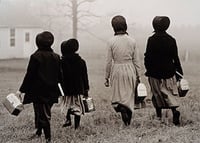Grounded Upon God’s Word: The Life and Labors of Jakob Ammann – Book Winner & Excerpt
We’re back with the winner of Grounded Upon God’s Word: The Life and Labors of Jakob Ammann, a new book by authors Andrew V. Ste. Marie and Mike Atnip about the life of the early Amish leader. If you missed the Q-and-A with Andrew, you can check that out here. The book winner is at the bottom of the post. Thanks to all who entered with comments and questions. As a special bonus, Andrew is planning to respond to some of your comments in a future post here, so stay tuned.
Before we get to the winner, we first have an excerpt from the book – Chapter 3, where Jakob Ammann enters more fully into the story. One note: you’ll see Ammann referred to as “Yaggi” in the first paragraph of Chapter 3 below. We learn in Chapter 1 of the book that Yaggi is a Swiss diminutive form of the name, equivalent to “Jakie” in English. In some historical documents, Jakob Ammann is referred to as Yaggi Ammann.

Grounded Upon God’s Word: The Life and Labors of Jakob Ammann
Chapter 3
In Stockhorn’s Shadow
Jakob Ammann first saw the light of this world among the pine-clad mountains, crystal-clear streams, and lowing cattle of the Simmental Valley just a few miles to the west of Lake Thun, Switzerland. If a man could live off of natural beauty, the residents of Erlenbach im Simmental[1] would be about as long-lived as anyone on this earth! What boy would not want to grow up with 7,190-foot Stockhorn Mountain in his backyard? This majestic masterpiece of God’s handiwork is such a charming place that today a cable car has been built to access the summit. There, sitting amongst the clouds, one can eat at a restaurant while filling his soul with inspiration from the grandiose views. One has to wonder what young Yaggi Ammann would think to see a cable car floating over his home today![2]
Boys are boys and will always be boys. While we have no information about Jakob’s childhood, it is hard to imagine that Jakob did not climb the Stockhorn with his brothers and the local boys. We can imagine Jakob and the neighborhood children clambering up the slopes of the pine-covered hills behind the house—and sliding down them in the winter on sleds of some sort. Wildenbach—Deer Creek[3]—spills down the hill a few hundred yards away, and hundreds of acres of forest lie just behind the house. A boy’s delight!
The Ammann Clan
Jakob’s grandparents were Uli and Catherina (Platter[4]) Ammann, to whom six children were born in Erlenbach. Jakob’s father, Michel, was the fifth child, with a younger brother named Jakob. Grandpa Uli died less than one year after Uncle Jakob was born, with Michel being a lad of but three years of age.
Uncle Jakob had a son named Jakob, as well. Suffice it to say that Jakob Ammann was a common name in those days! “Ammann” is probably derived from the German word Amptmann[5], which was a bailiff or sometimes similar to a small-town mayor. A bailiff is something akin to a sheriff’s deputy, and we can imagine dozens of people serving as bailiff or mayor in medieval Switzerland. When men began to carry a last name, often based upon their occupation—think Miller and Baker and Smith—many different families could have taken on the last name of Amptmann or Ammann. Add to this the fact that Hans, Jakob, and Ulrich were very common first names in those days, and one can understand that family histories can get confusing very quickly!
Michel Ammann is recorded as being baptized—as an infant, of course—into the Reformed Church on August 18, 1615. He married Anna Rupp (baptized March 6, 1614) at Erlenbach on March 5, 1638. The couple’s first child, a daughter named Madlena, was baptized on December 16, 1638. A son, Hans, followed in 1642.
Jakob Ammann was the third child and second son in the family. His Reformed Church infant baptism is recorded at the Erlenbach im Simmental chapel on February 12, 1644. Two more daughters entered the Michel Ammann family in Erlenbach: Cathrina (1647) and Anna (1651).
In 1655—when Jakob was around 11 years of age—the Michel Ammann family moved to Oberhofen, where the last known son joined the family. Ulrich (Ulli, for short) was born here and baptized on January 12, 1662, in the nearby Hilterfingen church. Jakob was nearly 18 years old when his youngest brother joined the family.
Jakob’s father and grandfather were both tailors. “Like father like son” applied to Jakob as well, since he also pursued the same vocation.
How nice it would be to be able to peek into the thinking of someone from times past! Did Jakob look at his little baby brother and dream that one day they would both be ministers among the Swiss Brethren? Most likely not, since at this time the family appears to not have had any official relationship with the Anabaptists. Like almost everyone around them, they were Reformed Church members, whether serious about their religion or not.
On to Marriage
From all appearances, Jakob began married life sometime in the 1660s, marrying Verena Stüdler. Verena may have come from the village of Buchholterberg, about 10 miles north and east of Oberhofen, but we simply do not have clear information concerning her family.
In 1665, the Hilterfingen Chorgericht fined Verena because she “has carelessly brought fire and transported it without proper receptacles.” With essentially all buildings made of wood, early modern Europeans had to be very careful about fire safety. Verena “asked for forgiveness and promised improvement,” and the Chorgericht gave her a warning and a fine of five shillings.[6]
In November 1671, Jakob apparently needed cash, and so borrowed money from the poor fund. As security, he used a paid-off promissory note of his father’s. While this could indicate the financial struggles of a young businessman, Jakob soon became a fairly successful tailor, economically speaking.
By May 1673, his parents were living back at Thal[7] and most of their children had left home. Jakob and Verena stayed on at Oberhofen. Michel and Anna contracted to pay their unmarried daughter Cathrina for taking care of them[8]. Michel was nearly 60 at the time.
Jakob seems to have remained faithful to the Reformed church through the late 1670s. On March 12, 1671, he[9] served as a godfather or sponsor[10] at the baptism of Jacob Immer, son of Uli and Barbara (Frutiger) Immer. Today, these baptismal records help researchers decipher who lived where and who was related to whom.
All in all, Jakob appears to have had everything the world could offer to make him happy in the 1670s—a wife, perhaps children[11], a good trade, a house, relative financial stability, and a state-approved religion. But these things cannot satisfy the deepest longings of the human heart.
At some point, the Anabaptists and their beliefs began to draw his attention. How interesting it would be to know how that came about! His oldest sister, Madlena, had married Anthoni Wolff, and their oldest son, Hans, ended up among the Anabaptists in later years. The last names of Jakob’s maternal grandparents, Hans Rupp and Madlena Frey, would become Anabaptist names which were transported to America. Who was the first to convert to Anabaptism? Who influenced whom? Dozens of families within a ten-mile radius of Jakob’s home would eventually join the Swiss Brethren, abandoning the Reformed Church. The day came when Jakob himself had to choose to follow Christ—even though it meant living as a hated outlaw, a ridiculed Anabaptist, a hunted fugitive, and a fleeing refugee.
Had he been a serious Reformed Church believer beforehand? Or, as many in his day, did he just “put his time in” at so many church services each year so the Chorgericht, the “Morals Court,” would leave him alone?
[1] “Bach” means creek, “im” means “in the,” and “tal” means valley. Thus Erlenbach im Simmental is translated as Erlen Creek in the Simme Valley. Simmental cattle, known for their fast growth, were named after the Simme Valley, where they originated. At the head of the Simme River, just over the pass, lies the Saanen valley, from which Saanen goats received their name. Saanens are some of the biggest and best milking goats. Saanen goats and Simmental cattle give us a glimpse of the agricultural heritage of the area.
[2] While the cable car does not pass exactly over the Ammann home, it would be clearly visible about ½ mile away.
[3] “Wilden” could refer to any wild game, but most often refers to deer.
[4] Some spell it “Blatter.”
[5] Or, Amtmann.
[6] Hanspeter Jecker, “The Emergence of the Amish (1693ff.): Chronology and Background to the Collapse of an Ecclesial Transformation Process,” Mennonite Quarterly Review 94(4) (October 2020):539-556, p. 549.
[7] The old home place, one half mile above Erlenbach im Simmental.
[8] Cathrina appears to have married Hans Schallenberg sometime before 1679. Hans is listed as in the Alsace in 1703.
[9] This could have been his uncle Jakob, since he lived in the area as well.
[10] Acting as godparent originally meant that one was guaranteeing that the child would have good spiritual training, especially if the parents died.
[11] The lack, thus far, of locating baptismal records of children born to Jakob and Verena does not indicate that he did not have any. The records could turn up any day now, they could be permanently missing, he could have had them baptized in a different village than thought, or he could have been on his journey toward Anabaptism and thus withheld baptism for his children. A later incident does show that he had at least one daughter.
Grounded Upon God’s Word Winner
 I drew a winner from your comment entries on the original post using random.org. That winner is:
I drew a winner from your comment entries on the original post using random.org. That winner is:
Comment #24, Derek J Stratelak
Congrats to you, Derek. Please email a shipping address for your book to me at ewesner[at]gmail[.]com.
Where to get the book
The book is available on Amazon, Barnes & Noble, and the publisher’s website, Sermon on the Mount Publishing. It is the third volume in the Cross Bearers Series, which also features earlier Anabaptist leaders Conrad Grebel and Michael Sattler.
Andrew also offers a free e-mail newsletter here.






